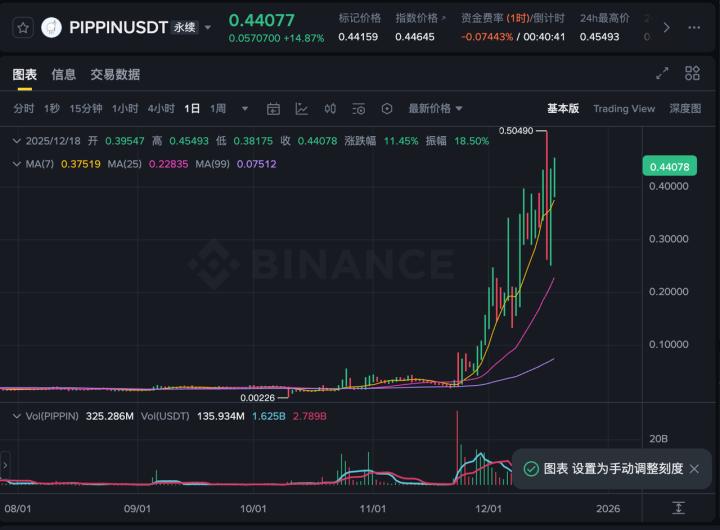Author: OGLong
Translation: Blockchain in Vernacular

Bitcoin has long been hailed as the most secure, decentralized blockchain, but its scalability limitations have been a significant obstacle. While other blockchains have explored multiple ways to increase capacity, these methods often sacrifice decentralization or introduce non-native solutions. At this time, the emergence of Fractal Bitcoin has brought a groundbreaking new approach to Bitcoin's scalability - expanding without losing its core properties. This article will take a deep dive into Fractal Bitcoin's innovations and how it expands Bitcoin's capabilities while maintaining Bitcoin's foundational principles.
1. Bitcoin’s scalability challenges
Bitcoin’s security and decentralization are its greatest strengths, but this comes with a cost: limited scalability. With a block size limit and a transaction rate of about seven per second, Bitcoin faces challenges in supporting large numbers of transactions or complex decentralized applications (dApps). In contrast, blockchains such as Ethereum have adopted more flexible smart contract capabilities and scaling solutions such as second-layer networks, but these often come with trade-offs in security, decentralization, and Bitcoin compatibility.
2. What is Fractal Bitcoin?
Fractal Bitcoin introduces a revolutionary scaling solution without sacrificing the core properties of Bitcoin . Rather than scaling by adding external layers or creating forks, Fractal Bitcoin takes a virtualization approach to scaling Bitcoin by recursively creating new layers that are fully compatible with the main Bitcoin chain. Each layer is a self-replicating instance of the Bitcoin Core software, allowing for unlimited scaling while maintaining the integrity of Bitcoin's original codebase.
Simply put, Fractal Bitcoin expands the Bitcoin blockchain into a multi-layer system without changing its basic structure. This means that all applications, tokens, and projects built on Fractal remain native Bitcoin, maintaining the same security, decentralization, and consistency as the original network.
3. How does Fractal Bitcoin work?
Fractal Bitcoin utilizes a process called blockchain virtualization. This involves packaging the entire Bitcoin Core software into a deployable blockchain package called the Bitcoin Core Package (BCSP). The BCSP can then be instantiated multiple times to create layers, each layer acting as an independent blockchain instance while anchored to the Bitcoin mainnet.
These layers are essentially fractal instances of Bitcoin — they replicate the structure of Bitcoin Core at different scales. The beauty of this approach is its consistency; each layer is a perfect reflection of the main Bitcoin chain, making it naturally compatible with existing Bitcoin infrastructure such as wallets and nodes.
4. The power of recursion: infinite scalability
The key to Fractal Bitcoin's infinite scalability lies in its recursive nature. As more layers are needed, the system can instantiate additional BCSP instances while maintaining the integrity of the structure. This scalability is both horizontal (scaling across multiple instances) and vertical (deeper layers can handle specific use cases or transactions).
This recursive approach enables Bitcoin to go beyond the limitations of a single layer and support complex applications such as decentralized finance (DeFi), large-scale games, stablecoins, etc. Importantly, all of this is achieved without introducing a new consensus mechanism or compromising Bitcoin's decentralization.
5. Application scenarios of Fractal Bitcoin
Fractal Bitcoin opens the door to a range of applications that were previously difficult or impossible to run directly on Bitcoin. The main application scenarios include:
1) Native stablecoins and DeFi applications : With Fractal Bitcoin, stablecoins and DeFi protocols can be developed directly on Bitcoin, providing users with a secure and decentralized alternative to the Ethereum financial system.
2) Scalable Ordinals and NFTs : Fractal’s architecture supports large-scale Ordinals and NFT platforms that remain fully compatible with Bitcoin while benefiting from the additional scalability provided by the Fractal layer.
3) Virtual Worlds and Large-Scale Games : Fractal’s recursive layer enables the construction of persistent large-scale gaming environments directly on Bitcoin, providing a solid foundation for blockchain entertainment.
6. What makes Fractal Bitcoin unique
Unlike traditional second-layer solutions or forks, Fractal Bitcoin is fully integrated with Bitcoin itself. It does not require any modifications to the main Bitcoin chain and does not introduce external protocols. This unique approach ensures that Fractal Bitcoin is aligned with Bitcoin's engineering principles while providing the scalability required for modern applications.
Additionally, Fractal relies on virtualization, which means that all Bitcoin infrastructure — wallets, nodes, and miners — can be easily integrated into the Fractal layer, with no new setup or configuration required. This makes the adoption of Fractal Bitcoin seamless across the entire Bitcoin ecosystem.
7. The future of Bitcoin scaling
Fractal Bitcoin is more than just a scaling solution; it is a paradigm shift in the way Bitcoin evolves . By maintaining native compatibility while unlocking new possibilities for decentralized applications, Fractal Bitcoin combines the best of both worlds: the security and trust of Bitcoin, with the scalability and flexibility needed for future innovation.
As more projects and developers explore the potential of Fractal Bitcoin, we will likely see a surge in Bitcoin-native applications that will rival those on other blockchains. Fractal Bitcoin ensures that Bitcoin continues to be the backbone of the decentralized economy, ready to support the next generation of blockchain use cases.
Link to this article: https://www.hellobtc.com/kp/du/10/5454.html
Source: https://medium.com/@OGLong_official/how-fractal-bitcoin-is-revolutionizing-bitcoin-scaling-a-deep-dive-a8f4d4e8d0d1






